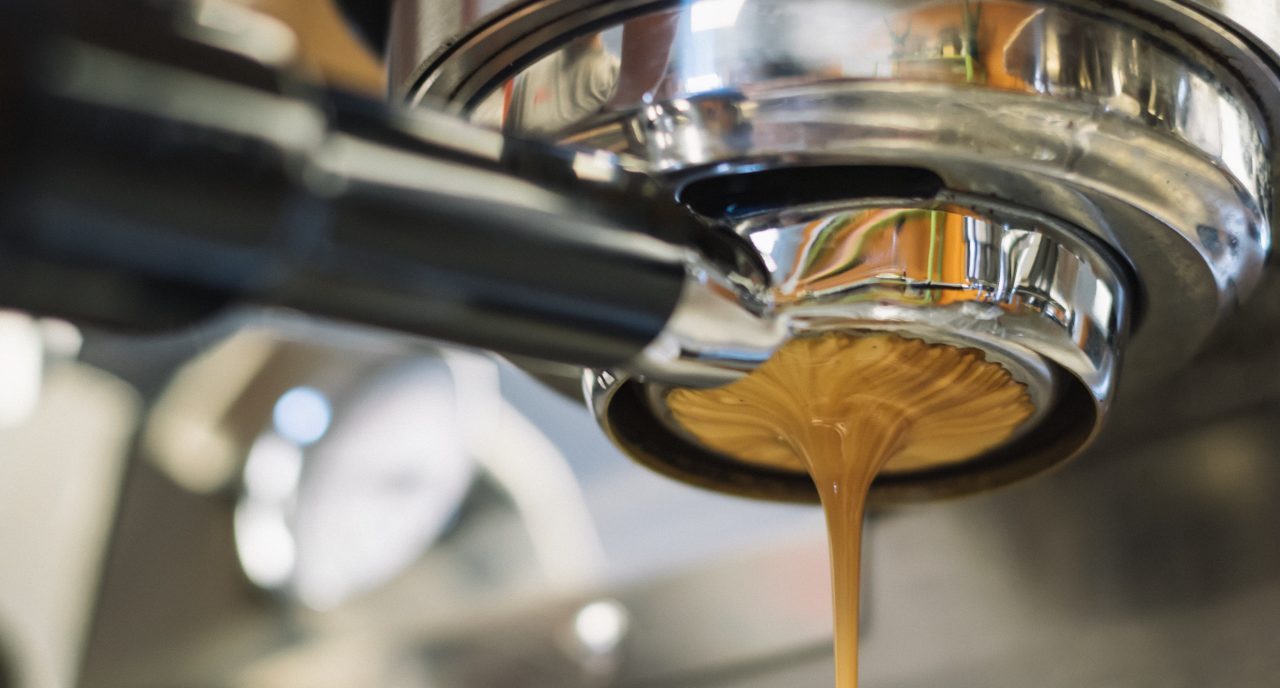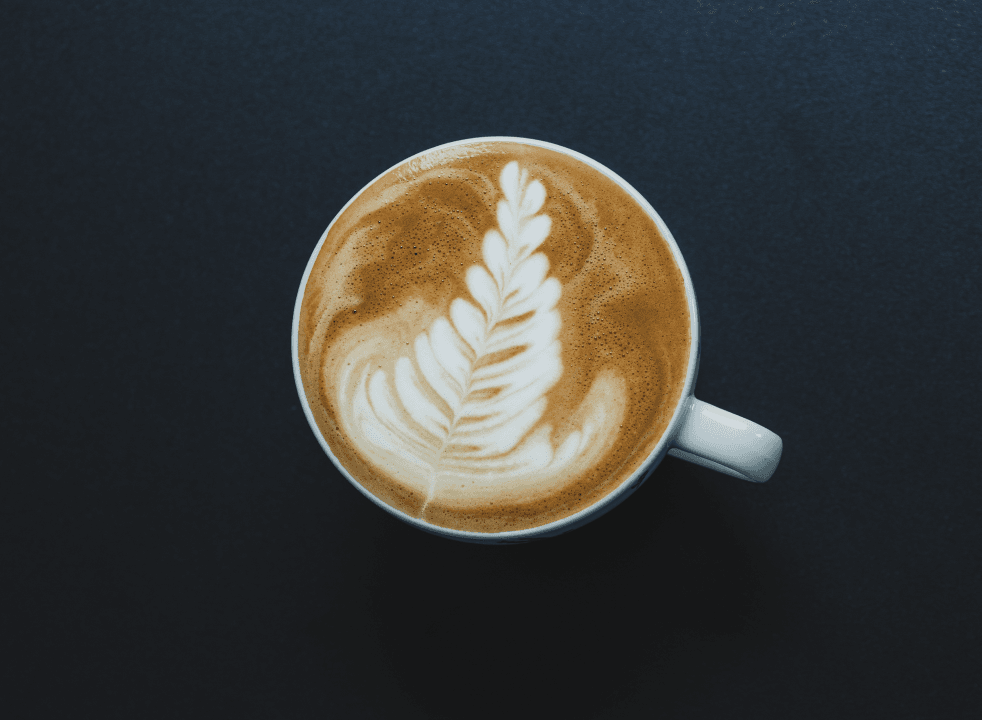Filter coffee's bitter little brother was invented to shorten the lunch break of Italian factory workers in the early 1900s. Almost a century later, it would become commonplace as an ingredient in large and small milk drinks with Italian and Spanish-inspired names.
Twice as much caffeine

Espresso is made by pushing hot water through finely ground coffee under high pressure. The coffee is packed in a metal filter - with a dosage of about seven grams of coffee for a single espresso. The water should be kept at around 95 degrees, while the machine should ideally be able to create a pressure of nine bar. This brewing method means that there are about four times as many dissolved solids in espresso than in regular filter-brewed coffee. Therefore, the concentration of caffeine is 2.3 times higher in espresso than filter coffee. In contrast, the caffeine content of a single espresso, which contains about 30 ml of coffee, is one third of the content of a "regular" coffee cup,
"(...) four times more dissolved solids in espresso than in regular filter-brewed coffee. Therefore, the concentration of caffeine is 2.3 times higher in espresso than filter coffee."
To shorten coffee breaks
Motivated by the idea of efficient workers, factory owner Luigi Bezzera invented the espresso brewing method in 1901. The machine was the first to be designed so that steam did not come into contact with the coffee, but only pushed water through the metal filter. Bezzera's patent was bought in 1905 by Desiderio Pavoni, who believed that the bitterness of steam-brewed coffee could be reduced. He experimented with water temperatures and pressure levels and found that the best espresso taste is created with a pressure of around nine bar and a temperature of around 90 degrees.
Darker burn
In the cup, espresso is characterized by a strong coffee flavour, intense bitterness and aroma. Because the coffee is brewed under high pressure, a thin layer of light foam forms on top, which is called "crema". There is a common perception that espresso is made from a specific type of coffee, but it is only the brewing method that defines what you have in your cup. However, espresso is usually made from coffee that is significantly darker roasted than the one in the coffee maker or on the press pot.
In Italy, the coffee is often so dark that the surface has become smooth and oily in the process, but in Norway, espresso is usually roasted a little lighter than this. Solberg & Hansen, which is the country's largest espresso supplier, is concerned that the coffee roasting process should help to bring out the flavors in the raw coffee. This places higher demands on quality - because the roasting process does not mask the raw material flavors as in the very darkest varieties. That's why Solberg & Hansen's darkest espresso, "Italian roast", is also roasted somewhat lighter than what you would be served in an Italian street café.
"In Italy, the coffee is often so dark that the surface has become smooth and oily in the process, but in Norway, espresso is usually roasted a little lighter than this."
German silk

The world's first commercial espresso machine was produced by the Gaggia brand in 1946. This was the first to pressurize water through coffee with a stable and good result - while being easy to use and priced at a level coffee shop owners could afford. A few decades later, the doors of a small coffee shop in Seattle would open for the first time. The rest is history, and today coffee shops are a common sight on street corners in cities large and small all over the world.
When the coffee bar wave reached Norway in the 90s, it was Solberg & Hansen that supplemented the country's new openings with freshly roasted coffee beans. Today, the espresso blends "French roast", "Italian roast" and "Half and Half" are well-established terms in the Norwegian coffee heritage vocabulary. Not least because they are used in thousands of espresso-based drinks served every day in coffee shops and cafés across the country.
Coffee bar menu
In its purest form, espresso is served as a "single" or "double" where the amount of coffee increases in proportion to the amount of water. A typical Norwegian coffee bar menu is often characterized by names with southern European origins, but the drinks are most closely related to those found in American coffee bars.
Cappuccino is a well-known classic and an espresso-based milk drink divided into thirds. It consists of one third espresso, one third steamed milk and one third milk foam.
Macchiato is an espresso with a little milk foam served in a small cup. It is made by working up thick milk foam that is pushed over a double or single espresso. This creates a white spot on the brown coffee surface.
Cortado is an espresso-based drink served with steamed milk in a medium-sized glass or cup. The milk is poured slowly over the espresso, leaving only the crema (the light foam at the top of the espresso) visible on the surface.
Latté means milk and consists of espresso with many parts of steamed milk. The drink is often served in large glasses with a thick layer of foam on top.
Mocca is a common feature in Norwegian coffee shops and is often a variation on Latté, where chocolate is added to the espresso before the milk is poured.
Americano consists of a single or double espresso diluted with hot water. The drink is served in a regular coffee cup and tastes like thinner espresso.